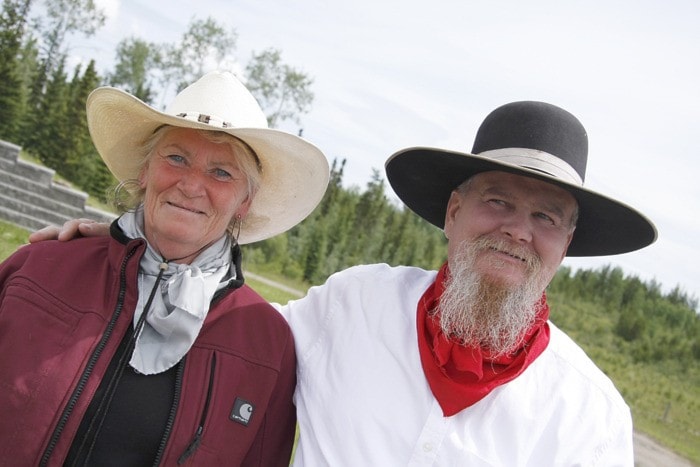Richard Caldwell is soft-spoken, but when he speaks, horses and their owners pay attention.
Based in Alturas, Calif., Caldwell, a renowned expert in the Vaquero methods of horsemanship was at the Hidden Lake Guest Ranch in early July, to share his knowledge with area horseriders.
Caldwell, who has practiced the Vaquero methods of horsemanship for 30 years, has the credentials to back up his advice, including the National Reined Cow Horse Association (NRCHA) Superior Title on seven horses and the NRCHA certificate of ability on several horses.
Given Caldwell’s easy-going demeanor, it is not surprising to learn the basis to Vaquero horsemanship is a quiet and slow approach.
This approach seems second nature to Caldwell, but proves to be one of the difficult lessons for students of the Vaquero methods.
“They [students] get in there too fast,” Caldwell said
“They really get in a hurry and the cow ends up turning back on them.”
The term Vaquero refers to a person who tends to cattle and literally translates to cowboy.
The term was applied to early Spanish settlers in California and Mexico.
The Vaquero methods, Caldwell explained, are used by ranchers to keep a horse in frame on a cow through proper positioning which allows horse and rider to cut a calf or cow out of a herd whilst causing the least amount of disturbance to the herd.
It sounds easy, but patience is key, Caldwell explained
Patience allows a rider to block the cow and let the cow find the hole and drift out of the herd.
“In today’s world, everybody is in a hurry to get things done,” Caldwell said.
“The Vaquero method doesn’t work like that.
“The slower you go, the more you get done when you’re working cattle.”
Ranchers or riders who want to practice the Vaquero methods, should seek horses with several traits, including attentiveness, looks for a job to do and wants to work a cow.
Also important is athleticism, Caldwell noted.
“The horse needs to be able to make the turns that need to be done to block the cow,” he explained.
To do that, Caldwell added, the rider has to be aware of his surroundings, so he knows where to be at the right time at the right place
“The horse will do his job once you get where you need to be, if you allow him to do his job,” he explained.
“A horse with cow sense can almost out-think the cow.”
One of the participants, at Caldwell’s clinic, hanging on to Caldwell’s every word was Tia Christie.
Christie organized the Vaquero clinics because she and the other participants believe horsemanship is an ongoing learning experience.
“It’s a whole lifestyle,” Christie said of the Vaquero method of horsemanship.
“The basics of the Vaquero method provide a foundation for reigning, even for English riding disciplines.”
The local group were particularly interested in the horsemanship and cattle work aspect of the Vaquero methods to help them with their work on their ranches as well as for competitions.
Caldwell also has patience and an appreciation for the inexperience the participants have regarding the Vaquero horsemanship methods.
Even though the participants at Hidden Lake Guest Ranch were novices in Vaquero horsemanship, Caldwell tipped his hat to the willingness to learn.
“You have to give them credit for wanting to learn the correct way,” he said, nodding at the group of participants settling into lunch.
“There are a lot of people out there who are set in their ways and don’t want to learn and will do it their way until they die.”
For Christie, Caldwell was also a huge help in getting her horse, a busy minded horse, who has a habit of bucking, to behave appropriately.
“He just showed me soft methods to bring my horse’s mind back to me,” Christie explained.
“In three days I have a horse who is responding and doing everything I want him to do,” an obviously pleased Christie said.
“It’s money well spent.”
